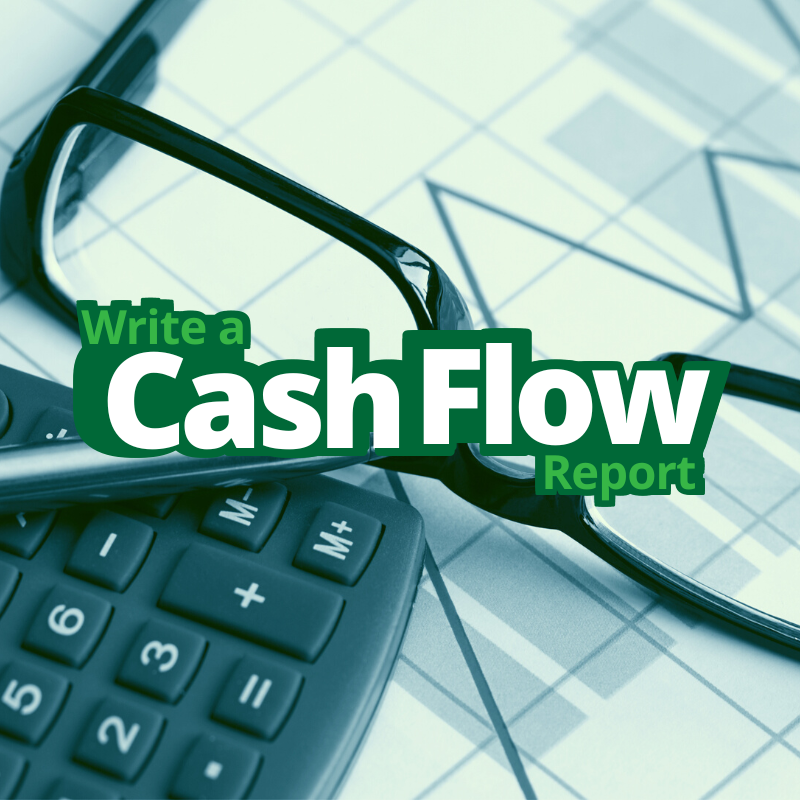
KNOWS WHAT IS COMING, SO YOU KNOW WHAT TO LET GO
Managing the amount of money that enters and leaves your organization is the most vital operation component. Idealistically, there should always be more coming in than going out, but this is not always the case. Regardless of your position, it is advantageous to have a snapshot of your financial standing at any moment. It provides an overview of how money enters and exits the organization, allowing you to identify and manage patterns. You may create cash flow statements monthly, quarterly, or annual or for any other period deemed valid. Most firms believe monthly recordkeeping to be advantageous.
Mins to Read: 20 – 23 Minutes
Age Bracket: 18-50 years old

He is saying that evaluating investors based on their success during a bull market is not fair. Many different techniques might seem brilliant when the dartboard is yielding big profits. According to this point of view, we should give significant consideration to the individuals who are still standing after all else collapses. Despite significant challenges, a strong strategy will continue to function quite effectively. When the tide came in, everyone generating money without using such a technique would have their earnings exposed.
What is a Cash Flow Report?
A Cash Flow Report or Statement does not include information on available cash, but a cash flow statement does. While income statements help reveal how much money was made and lost, they don’t always tell how much cash a company has at any moment.
When using accrual basis accounting, earnings and expenditures are tallied when they occur rather than waiting until funds are transferred or deposited. (Cash accounting involves keeping track of financial transactions only after the cash has physically been received. Investigate the differences between the cash and accrual basis accounting methods. Thus, you may not have the cash from that revenue on hand even though it shows up on your income statement. Adjustments are made to the data on your income statement in the cash flow statement, revealing your net cash flow for the period in question.
As an example, depreciation is accounted for every month. Depreciation is recorded monthly after the asset has been purchased with cash so that you can calculate the total cost of ownership throughout the asset’s useful life. However, the monthly deductions are not coming straight from your checking account.
The cash flow statement inverts that monthly outlay, revealing available funds rather than total expenditures.
The Three (3) Sections of the Cash Flow Report
Cash Flows – Operating Activities
A company’s key revenue generators are its operational operations, which include selling products and services, collecting royalties from the use of the company’s intellectual property, making sales on behalf of other companies, and paying the payment of vendor bills.
Operating cash flow may be presented either directly or indirectly, and it is up to the company’s chief financial officer (CFO) to make that decision.
- Direct Presentation: Cash received from sales, money spent on capital expenditures, etc., are all included in a detailed list representing operating cash flows. This straightforward approach is seldom used since the indirect method is more frequent.
- Indirect Presentation: Operating cash flows are provided as a reconciliation of profit to cash flow, an indirect form of the presentation below:
| Profit | P |
| Depreciation | D |
| Amortization | A |
| Impairment expenses | I |
| Change in working capital | ΔWC |
| Change in provisions | ΔP |
| Interest Tax | (I) |
| Tax | (T) |
| Operating cash flow | OCF |
The cash flow statement includes elements that are not necessarily cash flows but rather “reasons why cash flow is different from profit.”
Depreciation expense lower profit, but cash flow is unaffected (it is a non-cash expense). This is why it has been reinstated. Just like with the income statement, operational cash flows need interest and tax cash outflows to be net positive if the beginning point profit is higher than interest and tax.
Additionally, there is no clear direction for utilizing the profit figure in the reconciliation. Different businesses refer to it as operational profit, pre-tax profit, post-tax profit, or net income. The modifications needed to get down to a functioning cash flow amount depend on the starting point of the reconciliation.
Cash Flows – Investing Activities
The term “cash flows from investing activities” refers to all the money that came into or left an organization due to its purchases or sales of fixed assets and other investments during the reporting period.
Investing operations are the source of cash flow when a company buys or sells investments or assets other than cash and short-term investments. The acquisition or disposal of PP&E and other non-current and financial assets constitute investing cash flows. Capital expenditures(CapEx) refer to the money spent on plant, machinery, and equipment.
This part includes any investments your business has made by buying machinery, property or other readily liquidated financial assets referred to as “cash equivalents.” When you invest money, that money is transformed into a purchase with the same worth.
You lose Php 500,000 in cash when you spend Php 500,000 on a lawnmower for your landscaping business. In exchange for a Php 7 Million store location, you must forfeit Php 7 Million in cash. When we reverse those investments, the cash on hand is taken out and recorded under Cash Flow from Investing Activities. Although they have financial worth, they are not the same as cash, the only asset we are concerned with in this situation.
The bulk of your company’s cash flow for small enterprises often won’t come from investing activities. But because it impacts your working capital, it still has to be reconciled. Changes in the amount and makeup of an organization’s equity capital or borrowings are examples of financing operations that generate cash flow for the business. Borrowing, e-paying bank loans, and issuing and repurchasing shares are typical examples of cash flows from financing. The distribution of dividends is also considered a funding inflow.
In this example, Cash Flow from Investing Activities–
On our income statement, the acquisition of equipment is shown as a new Php 250,000 asset. Since it’s an asset rather than cash, we subtract Php 250,000 from our cash on hand when the cash flow statement shows (Php 250,000).
Cash Flows – Financing Activities
The phrase “cash flows from financing operations” refers to all the money inflows and outflows that occurred during a reporting period due to transactions with owners or lenders who provided long-term money to the firm or received it back.
Changes in the amount and makeup of an organization’s equity capital or borrowings are examples of financing operations that generate cash flow for the business. Borrowing, e-paying bank loans, and issuing and repurchasing shares are typical examples of cash flows from financing. The distribution of dividends is also considered a funding inflow.
In our example, Cash Flow from Financing Activities
On the balance sheet notes payable is shown as a Php Php 350,000 liability. We report the loan’s profits as a Php 350,000 increase to cash on hand since we received the money.
The flow of funds during the month
The entire cash flow for the month is shown at the bottom of the cash flow statement as Php 2,125,000.
Even though our net income, which was collected from our income statement and is shown at the top of the cash flow statement, was Php 3 Million, we only got Php 2,125,000
We have Php 2,125,000 available to spend right away, if necessary. Our net income alone could lead us to conclude that we have Php 3 Million in cash on hand. In such instances, we wouldn’t really know what we had to work with, and we ran the danger of going over budget, making bad financial decisions, or lying about our liquidity to potential lenders or business partners.
Why do we need cash flow statements?
Cash flow statements are an integral aspect of financial analysis as long as you utilize accrual accounting for three reasons:
- They demonstrate your liquidity. That means you know precisely how much operational cash flow you have available in case you need it. So you know what you can and cannot afford.
- They display changes in assets, liabilities, and equity as cash withdrawals, cash inflows, and cash kept. These three areas constitute the foundation of your company’s bookkeeping. They include the accounting equation, which allows you to measure your performance.
- They allow you to forecast future cash flows. You may use cash flow statements to generate cash flow predictions, allowing you to predict how much liquidity your company will have in the future. This is critical for developing long-term company strategy.
What Can the Cash Flow Report Tell Us?
- You may gauge earnings quality by comparing operational cash flow to net income. Earnings are considered excellent quality if net income is less than the cash flow from operating operations.
- This statement is helpful for investors because, following the maxim “cash is king,” it provides a snapshot of the company’s cash inflows and outflows and an overview of its performance.
- The Cash Flow Report will reveal whether or not a firm is using debt or equity financing to cover operating losses or finance investments.
Cash Flows Report Sample
The cash flow from operations, investments, and financing activities are shown here from Amazon’s 2017 annual report.
Direct Method vs Indirect Method of Presentation
The direct and indirect methods are both acceptable approaches to generating a cash flow statement. The cash flow is calculated using the direct technique by adding all the individual cash inflows and outflows. Cash flow is calculated using accounting line items like net income, depreciation, etc., via the indirect approach. The cash flow statement is always generated indirectly in financial modeling.
The Direct Method
The direct technique involves keeping track of cash as it comes into and goes out of the company and then using that data to generate a cash flow statement at the end of the month. Producing and keeping track of cash receipts for each cash transaction adds more labor and organization to the direct technique than the indirect method. That’s why most small enterprises favor the indirect approach. Also, it’s important to note that even if you utilize the direct approach to record cash flows in real-time, you’ll still need to use the indirect technique to balance your cash flow statements with your income statement. As a result, the direct approach often takes more time than the indirect one.
The Indirect Method
To determine your working capital using the indirect technique, you must examine the transactions shown on your income statement and then reverse some of them. You are selectively switching your income statement to remove entries that do not reflect a change in cash balances. Many start-ups and small enterprises use this strategy since it requires less effort than the direct option. If you choose the indirect approach, you won’t need to double-check your claims against the natural process to ensure they match up. We will use the indirect technique when estimating cash flow in the following instances.
How to Prepare a Cash Flow Report?
You may use direct and indirect methods to display the operational portion of the statement of cash flows. Both approaches have equivalent “investment” and “funding” portions; the “operations” section is where things diverge. Using the direct technique, you may see the various categories of your gross cash inflows and outflows.
In contrast, the indirect technique uses the net income as a starting point before adjusting the profit or loss for the transaction impacts. Whether you choose the direct or indirect method, the outcome for cash flows from the operating segment will be the same, but the presentation will be different.
What is the origin of cash flow statements?
Personal accounting in Excel allows you to generate monthly cash flow statements from income and balance sheet data. Cash flow statements may be generated automatically by accounting software using data from the general ledger.
Both approaches need honest recordkeeping to provide a reliable cash flow statement. Employing a bookkeeper is the most guaranteed method to discover how much working capital you have. They will double-check your cash flow statement to ensure it accurately reflects your company’s financial situation.
Comparing negative cash flow with positive cash flow
If the bottom line of your cash flow statement is negative, it signifies that you had a cash outflow (negative cash flow) during the reporting period. Keep in mind that negative cash flow over the long run isn’t always a bad thing. For instance, as they work toward profitability, startups should keep tabs on their “burn rate.”
A positive balance every month indicates a good cash flow. Remember that a positive cash flow isn’t always helpful in the long run. While this may improve your short-term cash flow, there are less desirable ways to get it, such as taking out a hefty loan to save a failing firm. It’s not always the case that a good cash flow has a beneficial effect on the business.
Here’s where you can get a free template for a cash flow report:
Cash Flow Statement Template | Bench Accounting.
A cash flow statement is a helpful tool for evaluating a company’s financial health, level of profitability, and prospects for the company’s long-term future. The CFS may be used to assist in determining whether or not a firm has sufficient liquidity or cash to meet its obligations. A firm may use a CFS to make projections about its future cash flow, which is helpful for concerns relating to budgeting.
The Cash Flow Statement (CFS) reflects a company’s financial health for investors, who understand that the greater the amount of cash accessible for business activities, the better. This is not a fast rule. A firm’s growth plan can result in a negative cash flow if the strategy calls for the company to expand its activities. An investor may receive a clear idea of how much cash a business earns and acquire a firm grasp of a company’s financial well-being by examining the CFS of the company they are interested in investing in.
FAQS
What are the Three sections of the Cash Flow Report?
The cash flow report will be one of the important paper works for the ongoing business. It provides the plan throughout the year or month.
- Operating Activities
- Investing Activities
- Financial Activities.
How can I prepare the Cash Flow report?
Use direct and indirect methods to display the operational portion of the statement of cash flows. Both approaches have equivalent “investment” and “funding” portions; the “operations” section is where things diverge. In contrast, the indirect technique uses the net income as a starting point before adjusting the profit or loss for the transaction impacts. Whether you choose the direct or indirect method, the outcome for cash flows from the operating segment will be the same, but the presentation will be different.
MUST-READ AND SHARE!
2023 Your Practical Wedding Guide
Your Ultimate Access to Kuwait Directories in this COVID-19 Crisis
Investments and Finance Ultimate Guide
OFW FINANCE – Money News Update that you need to read (Table of Contents)
A Devotional for having a Grateful Heart
Stock Investment A Beginner’s Guide
How To Save Money Amidst Inflation
Philippines Best Banks with High-Yield Savings Return
Essentials Before Applying For a Credit Card
Credit Card Starter Guide for Beginners
If you like this article please share and love my page DIARYNIGRACIA PAGE Questions, suggestions send me at diarynigracia @ gmail (dot) com
You may also follow my Instagram account featuring microliterature #microlit. For more of my artworks, visit DIARYNIGRACIA INSTAGRAM

A multi-award-winning blogger and advocate for OFWs and investment literacy; recipient of the Mass Media Advocacy Award, Philippine Expat Blog Award, and Most Outstanding Balikbayan Award. Her first book, The Global Filipino Bloggers OFW Edition, was launched at the Philippine Embassy in Kuwait. A certified Registered Financial Planner of the Philippines specializing in the Stock Market. A recognized author of the National Book Development Board of the Philippines. Co-founder of Teachers Specialist Organization in Kuwait (TSOK) and Filipino Bloggers in Kuwait (FBK). An international member of writing and poetry. Published more than 10 books. Read more: About DiaryNiGracia
Acknowledgements
DISCLAIMER



Peace and love to you.